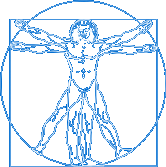
Body Power Control
As a result of several decades of interdisciplinary research in the areas of neurophysiology and muscle-physiology, psycho-motoric, biomechanics, bio-kinetics and bio-cybernetics, all in the context of competitive sports research in Leipzig, Germany, the following BfMC concepts were developed. All our devices are based on these:
BfMC Body Power Control
| Aim | To restore, maintain and improve the performance (i.e. the combination of strength, endurance, and coordination) of the musculoskeletal system via biofeedback training. |
| Main thesis | Physical load, and the strain generated by it, is medicine. |
| Explanations | The basis of the development of this device concept is the specific characteristic of biological systems to respond to strains with specific adaptive reactions (i.e., with organization/re-organization of their functionality).
The musculature and its neuronal control system is called the sensomotor function. The sensomotor systems are active-adaptive systems. One can achieve specific learning or training results (documented by an increase of the performance of the systems) by generating a strain via application of a specific load. This feature can be used for therapeutic rehabilitation, i.e. for a reduction of neuromuscular imbalances and deficits. Dosage and structure of strain play an important role in achieving specific therapeutic effects. The device concept Body Power Control incorporates these requirements. Different strain profiles can be generated via biofeedback training, which results in specific therapeutic effects. |
| Implementation | All BfMC device systems are based on the Body Power Control concept. These are computer-supported systems (cybernetic simulators) and enable a complete organization and execution of the training. Biofeedback methods play a central role in this matter. BfMC device systems in combination with the BfMC BioMC software enable:
|


